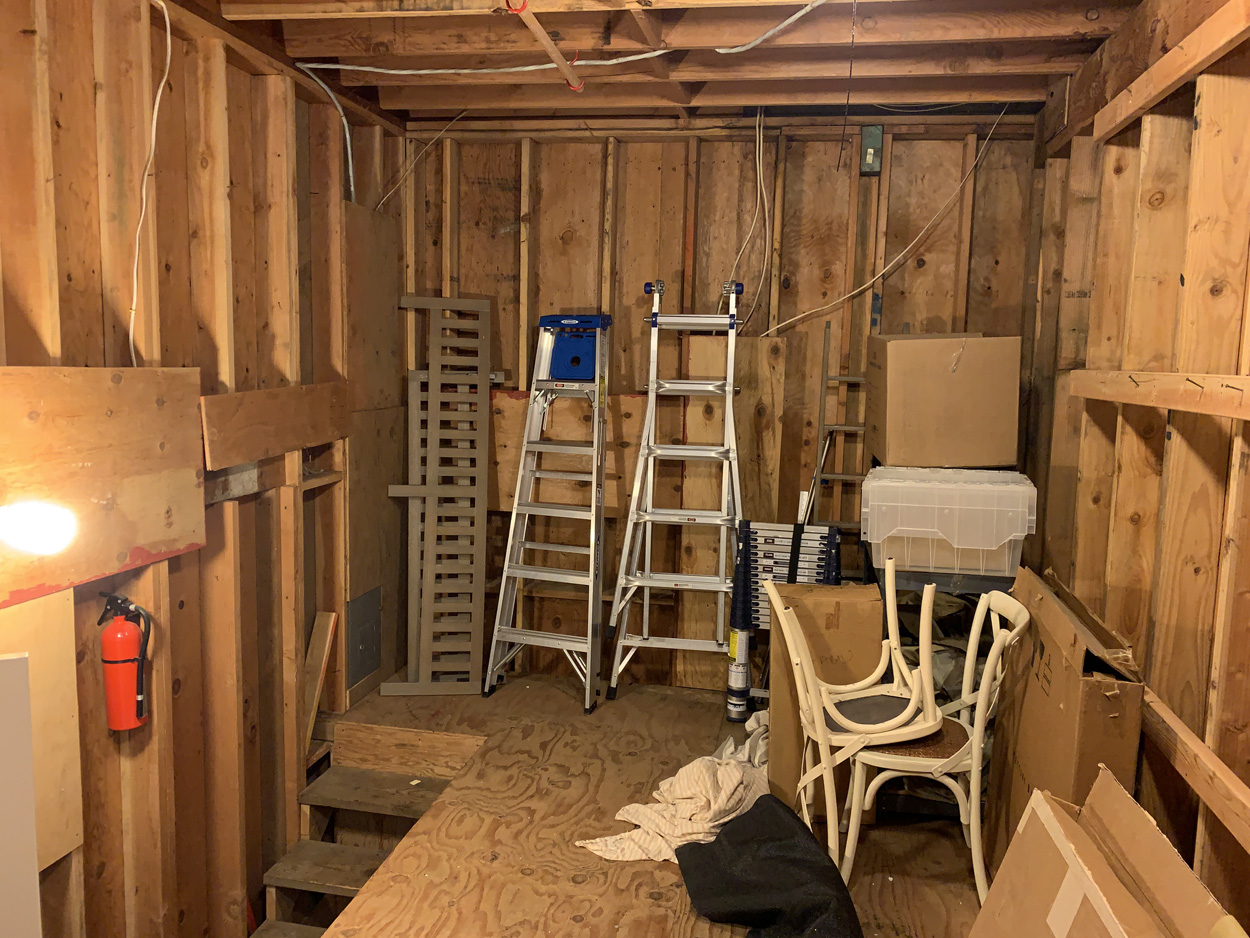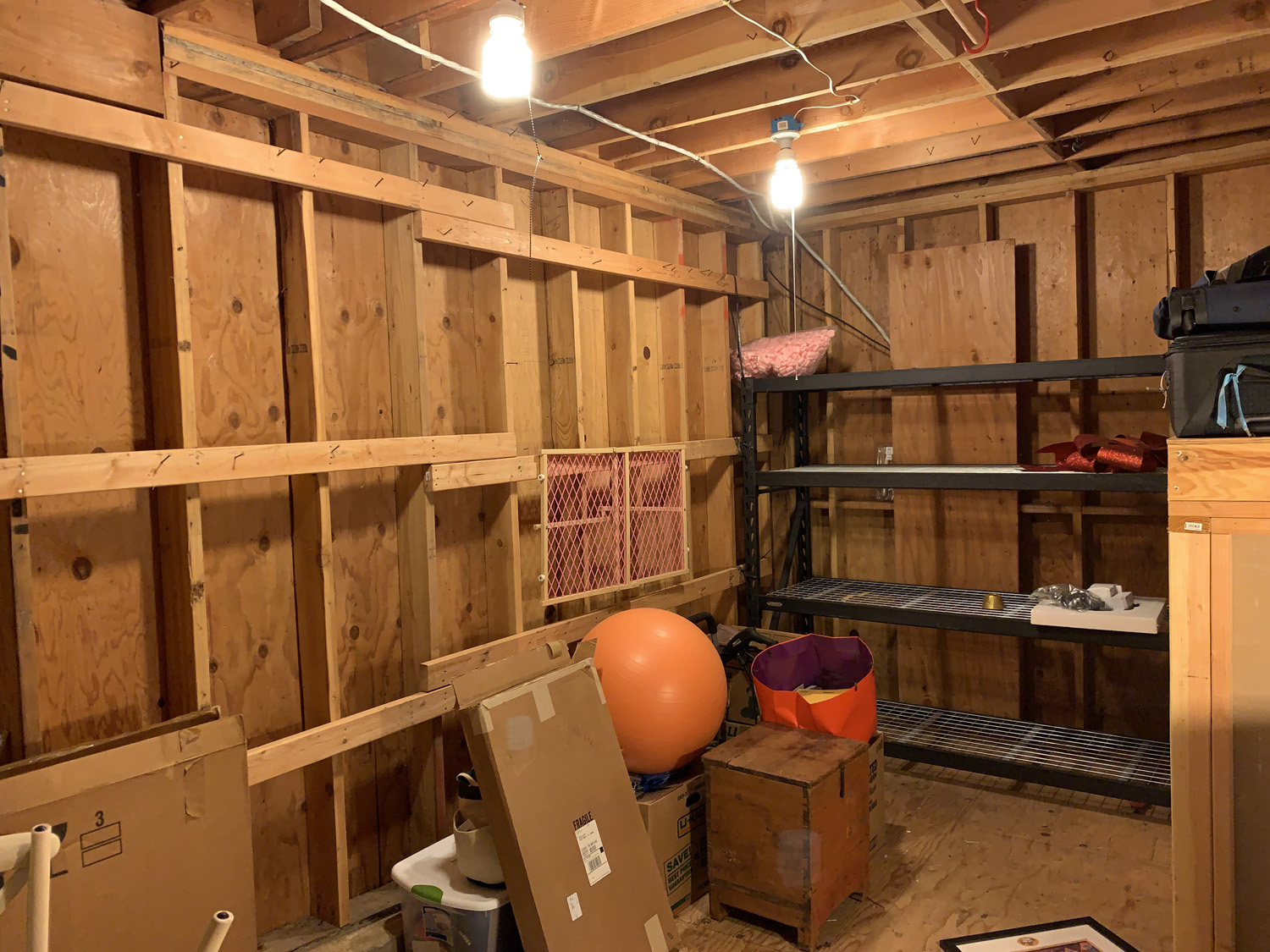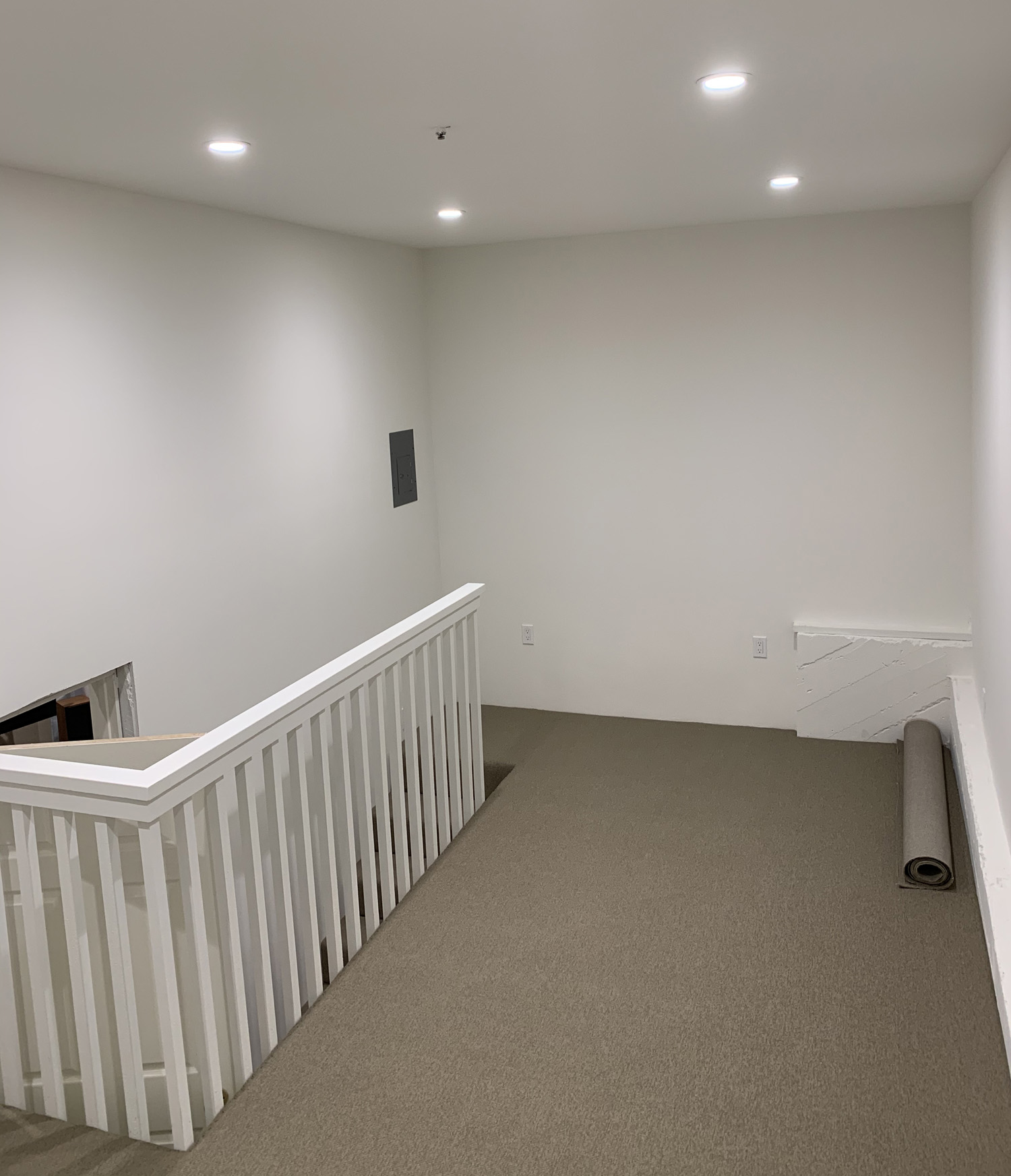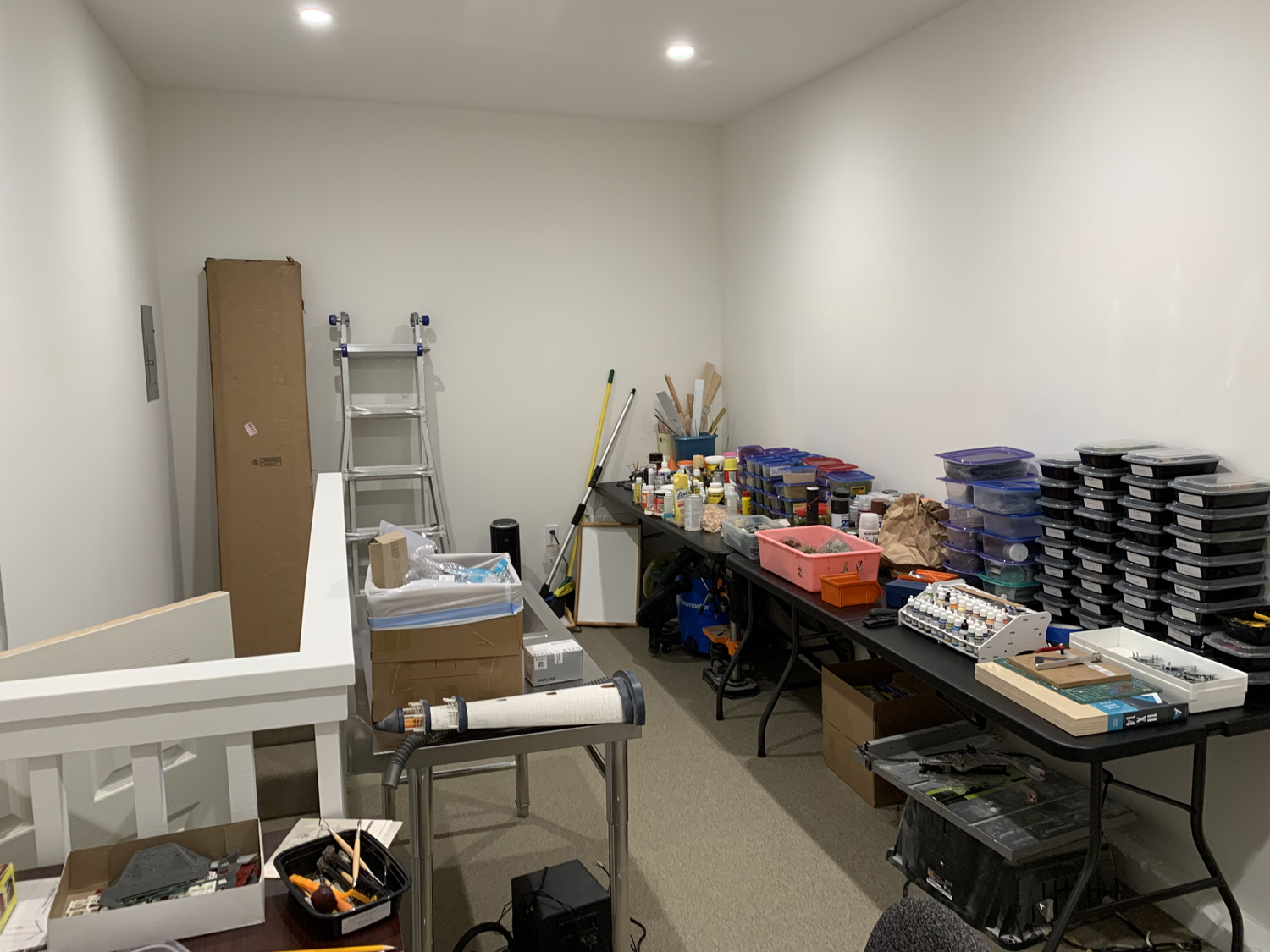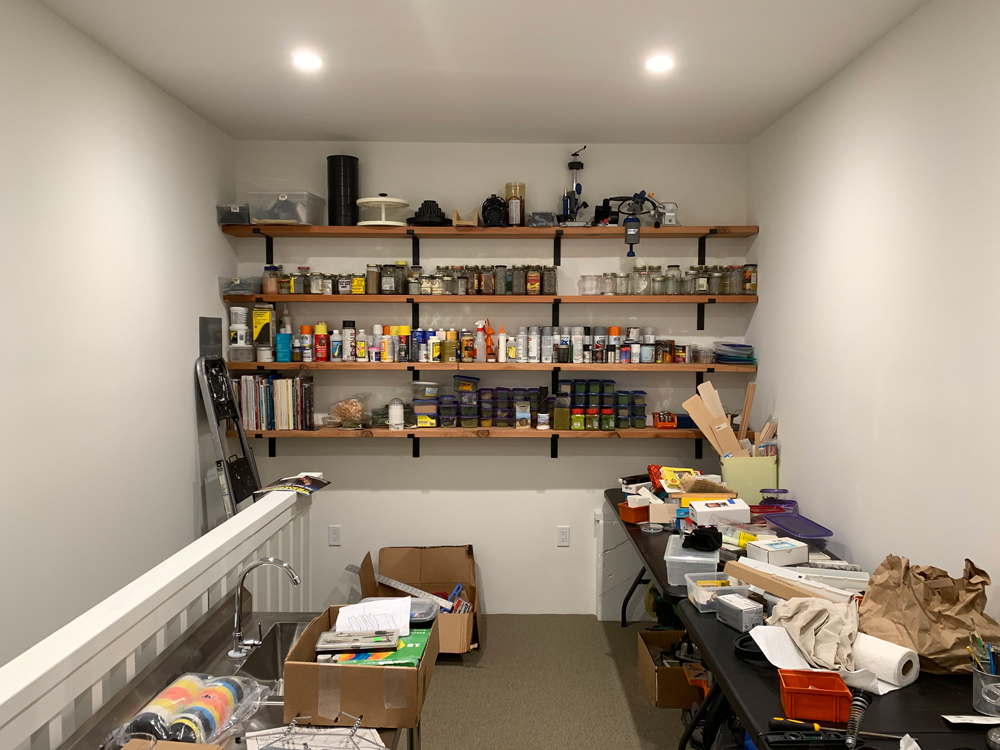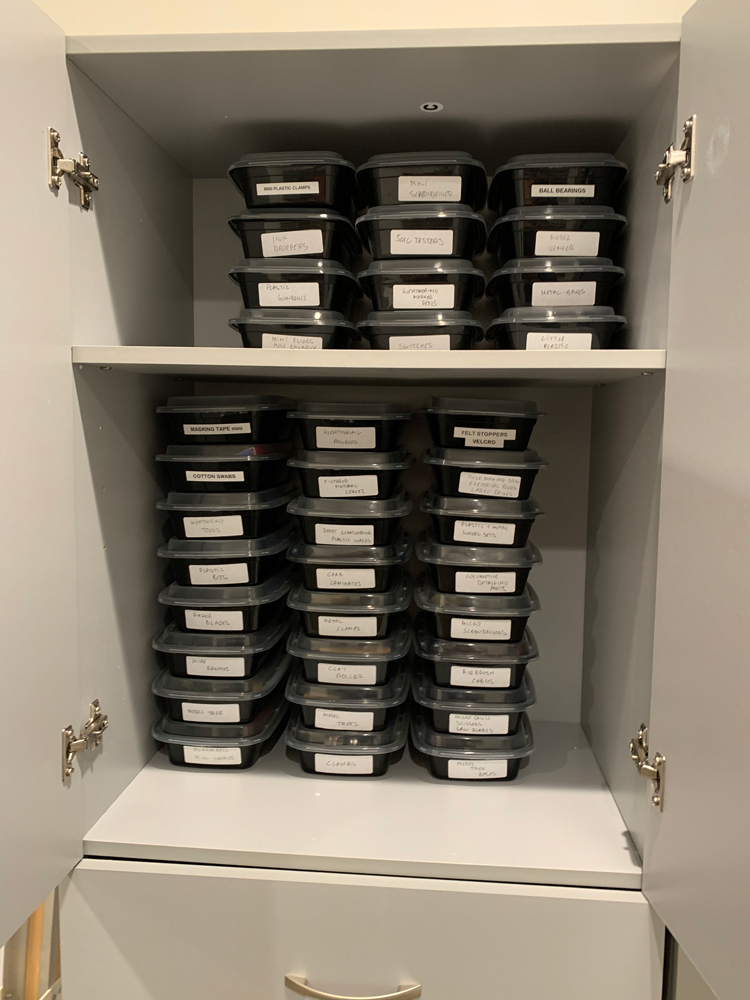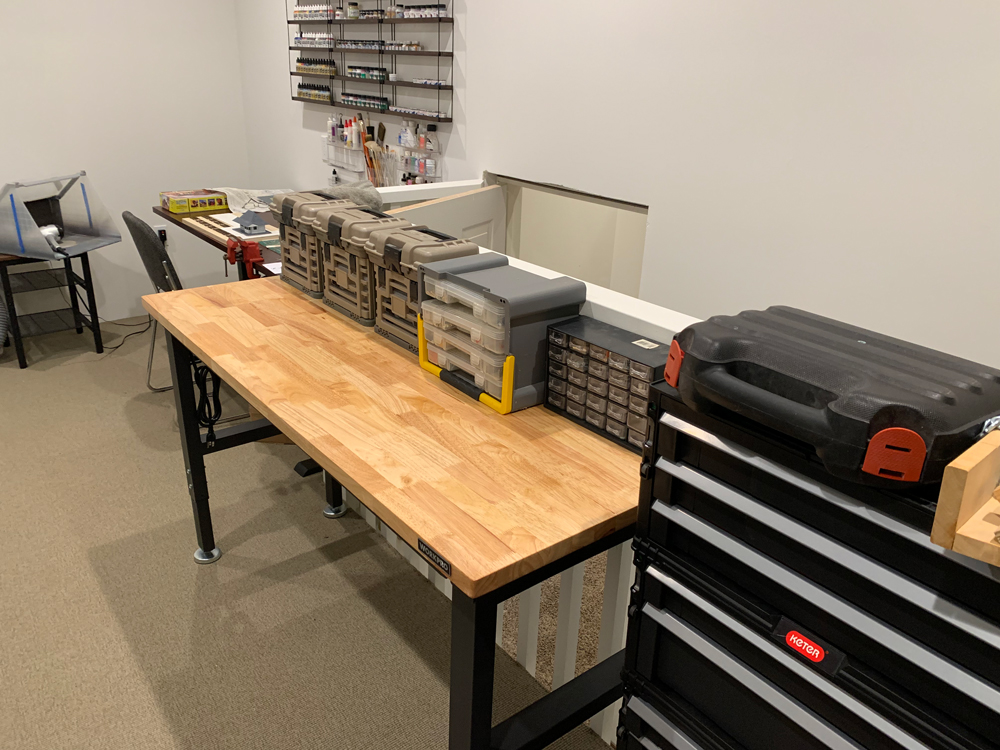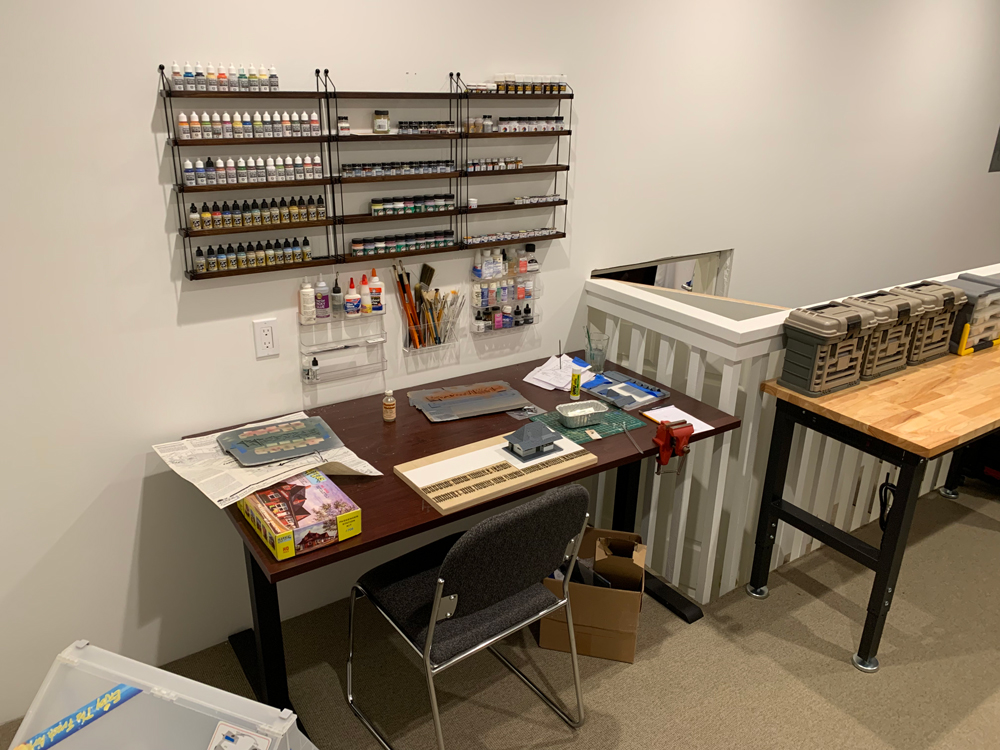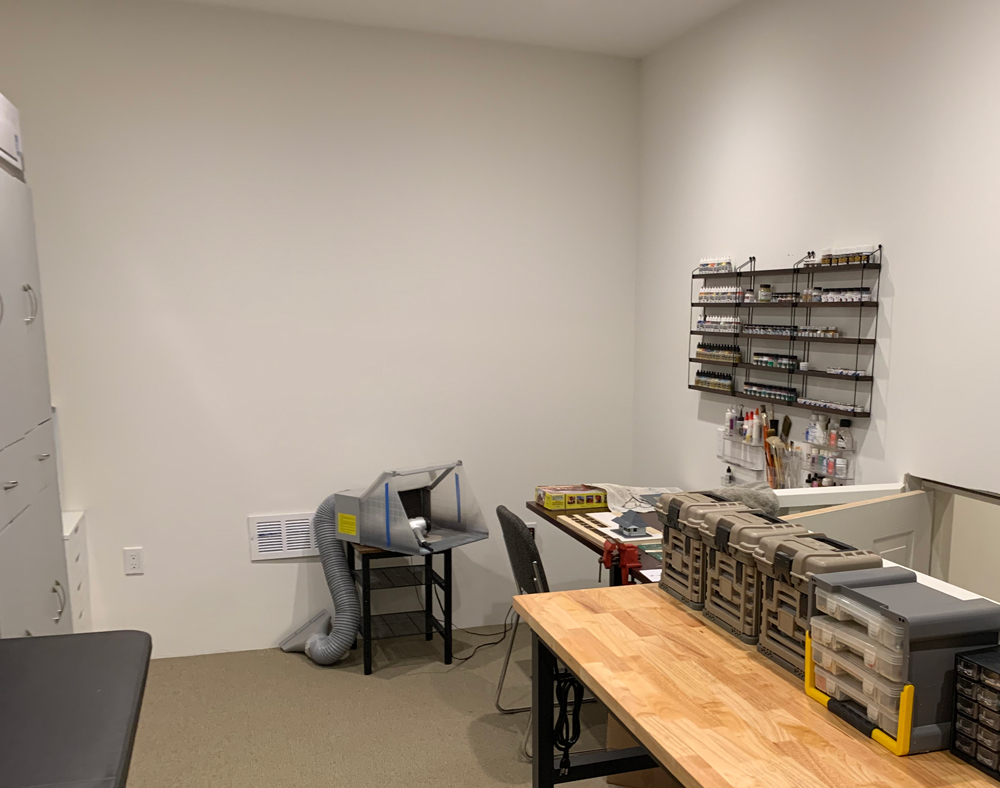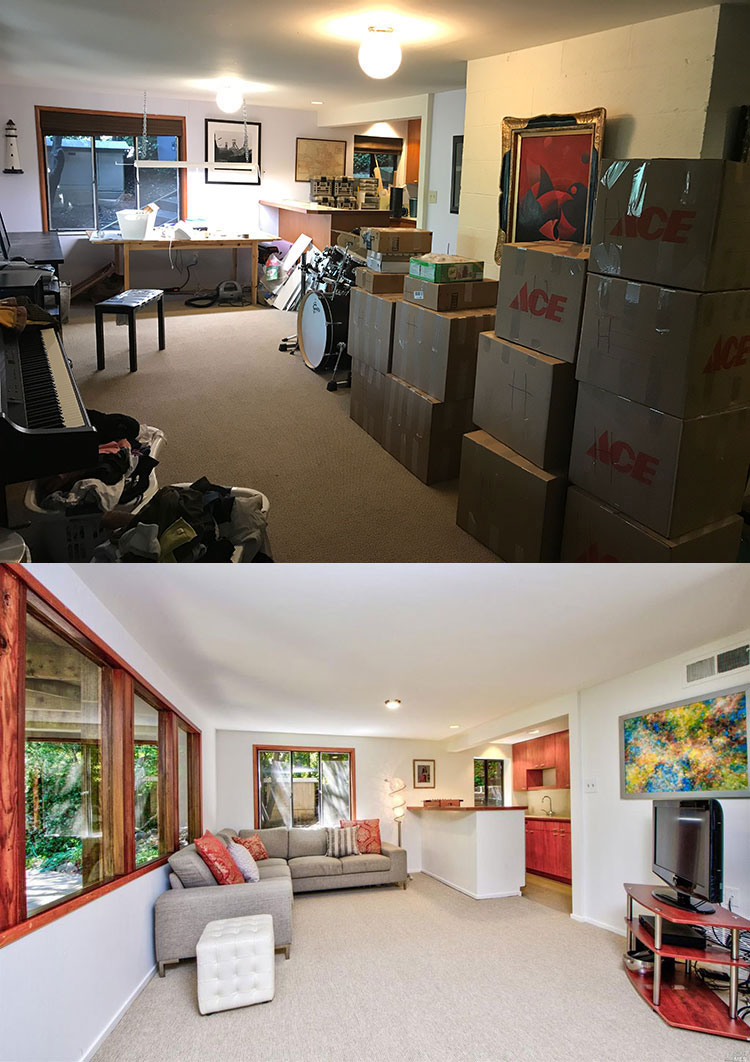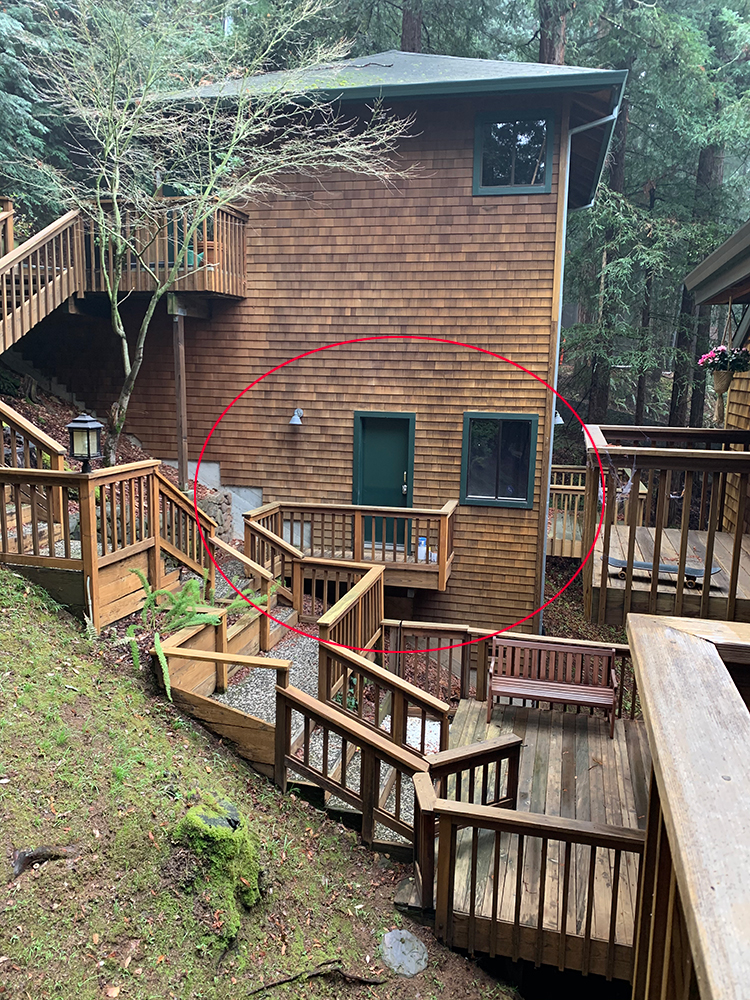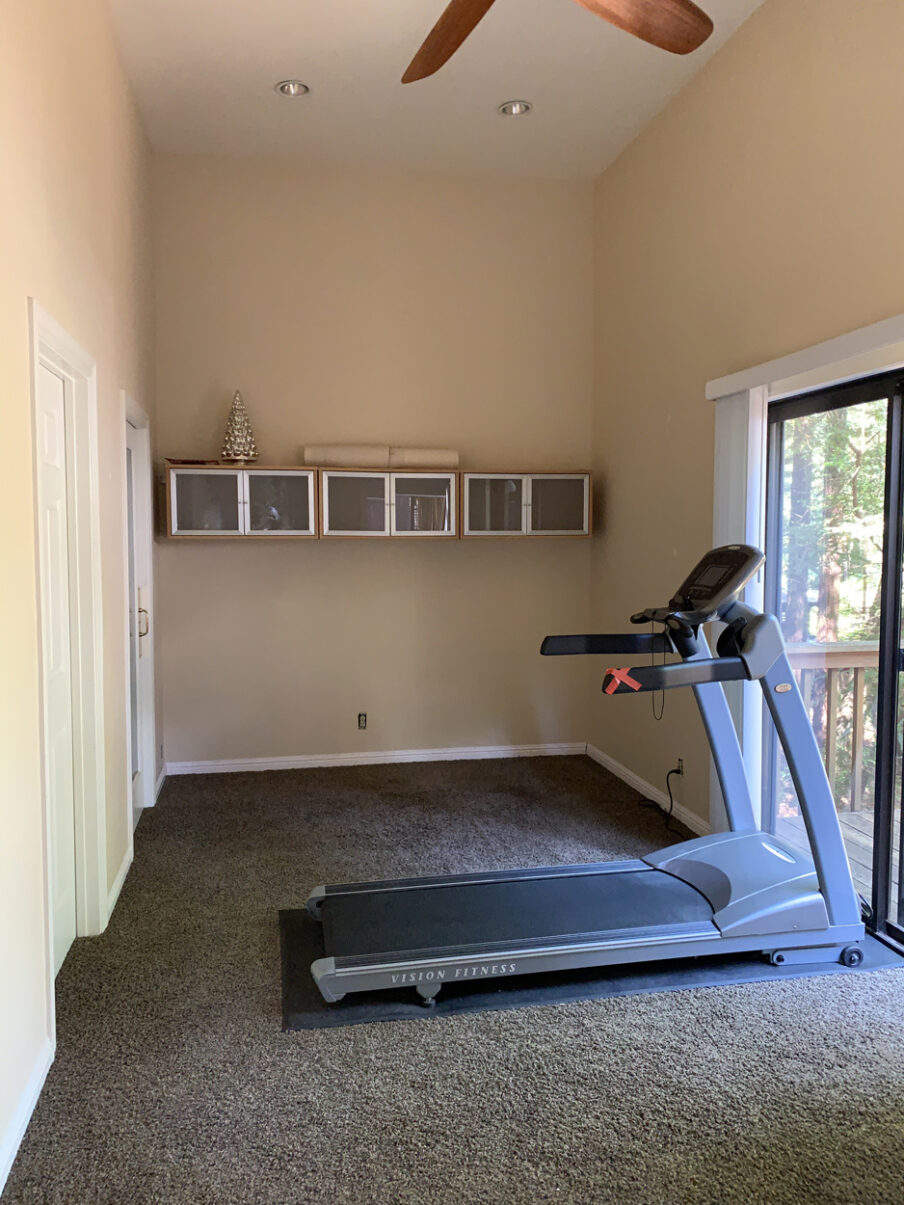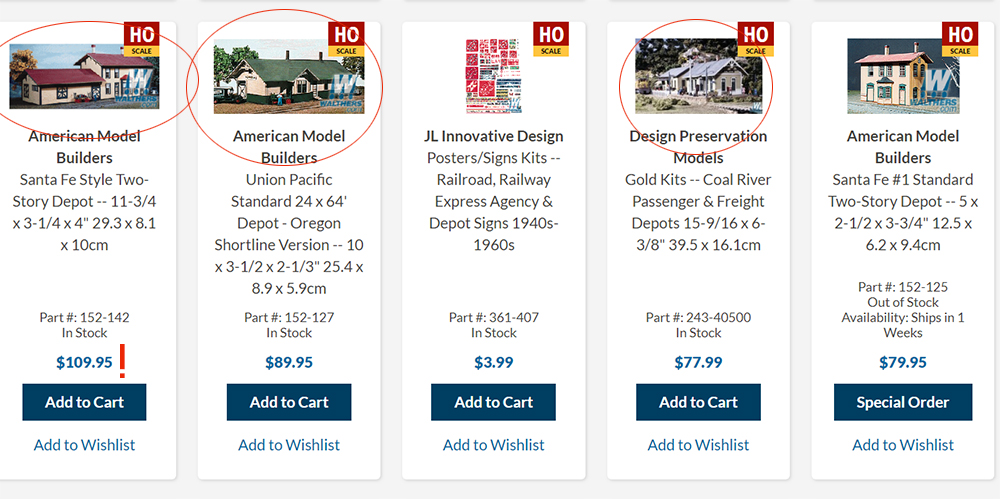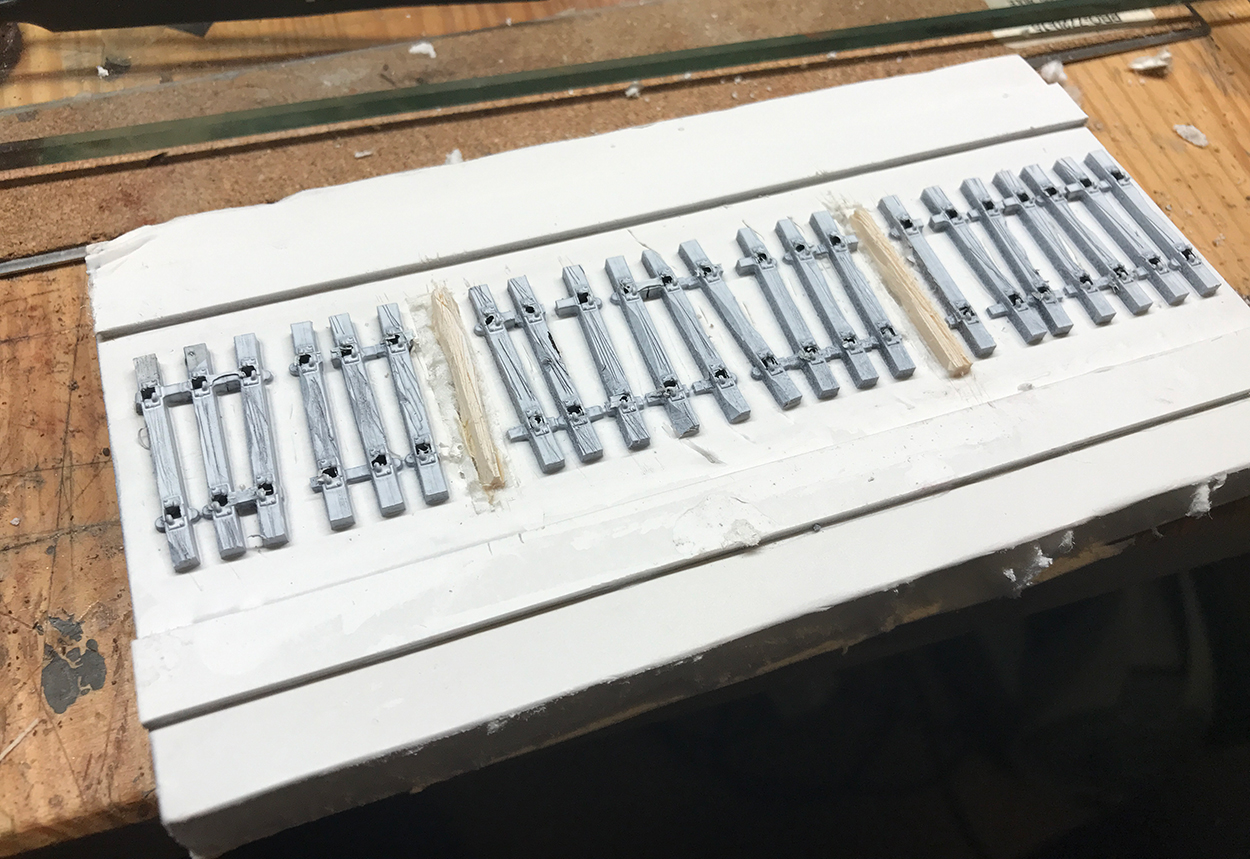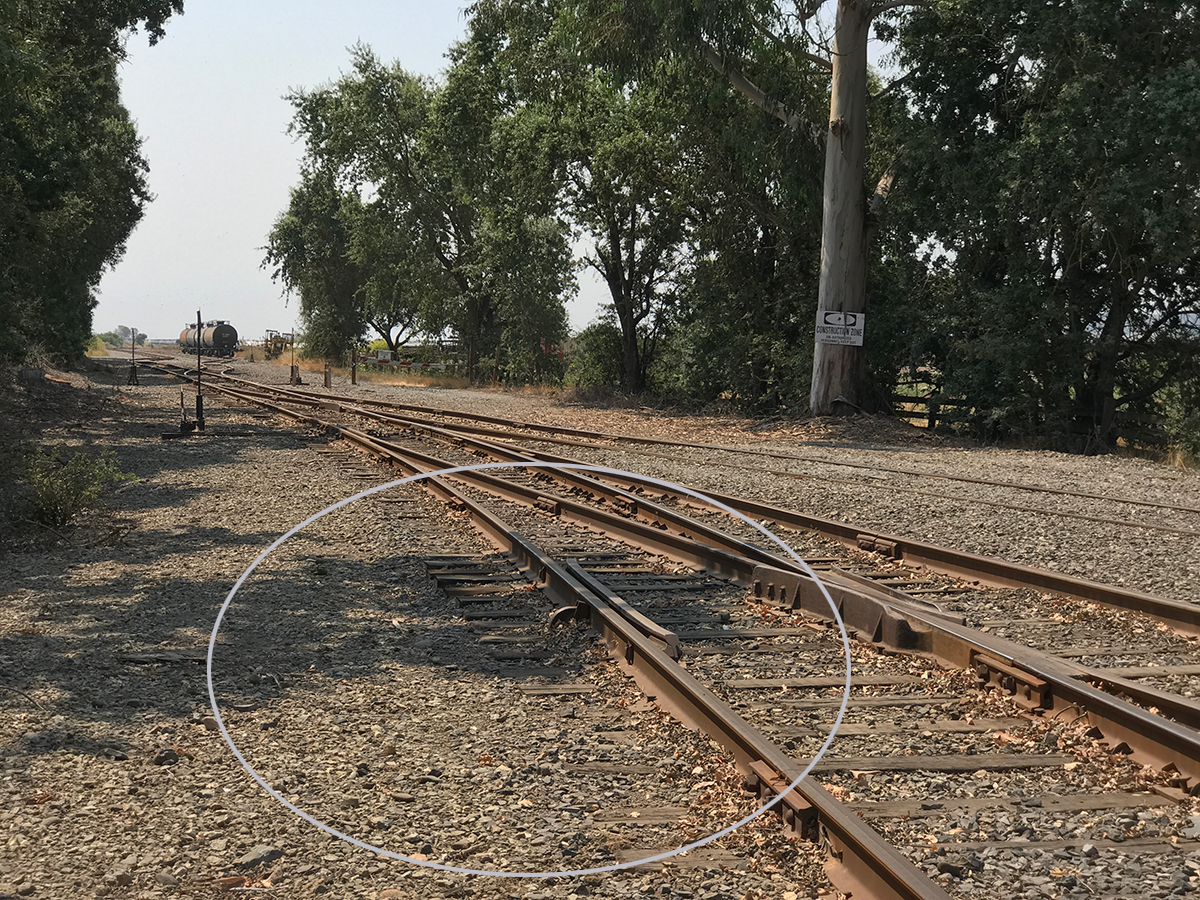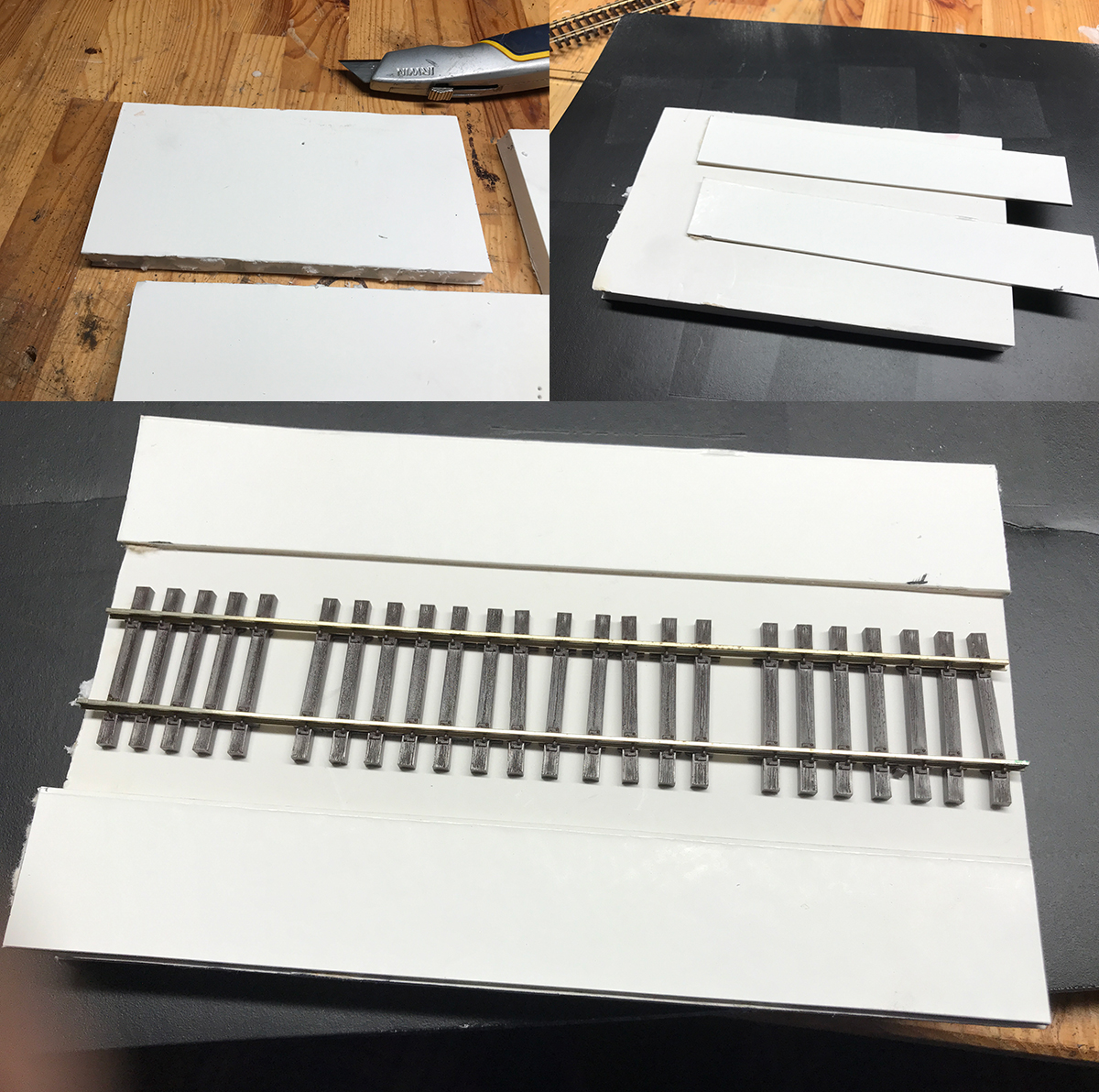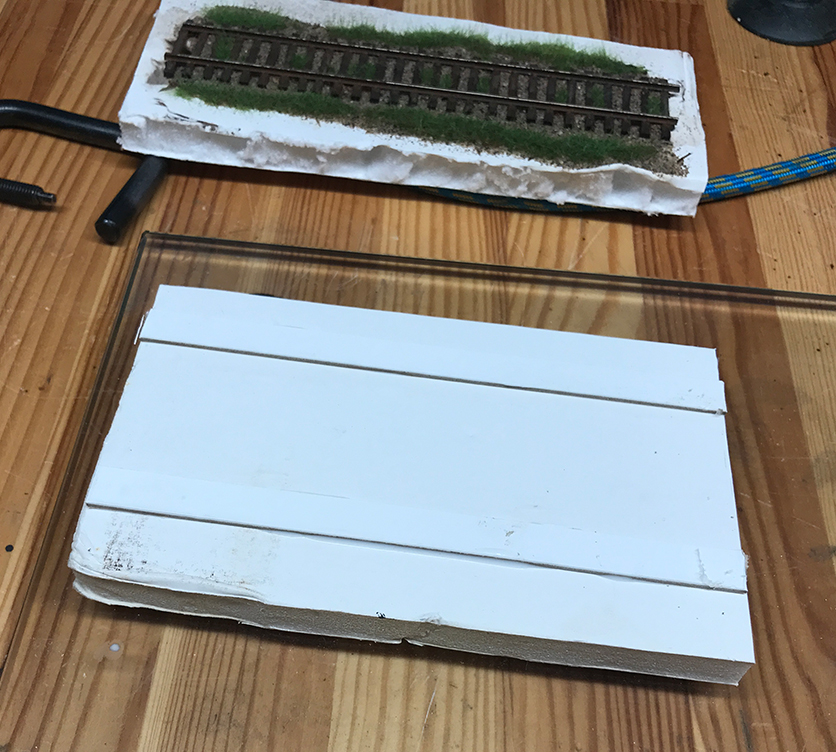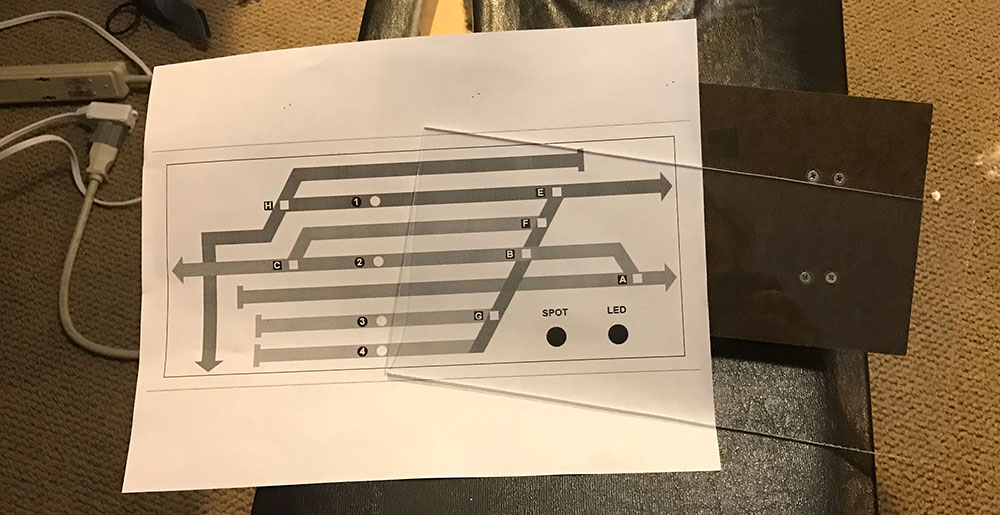I’ve decide to ease back into modeling (after a much needed four year break, long story, another time) by attempting to tackle a small diorama project.
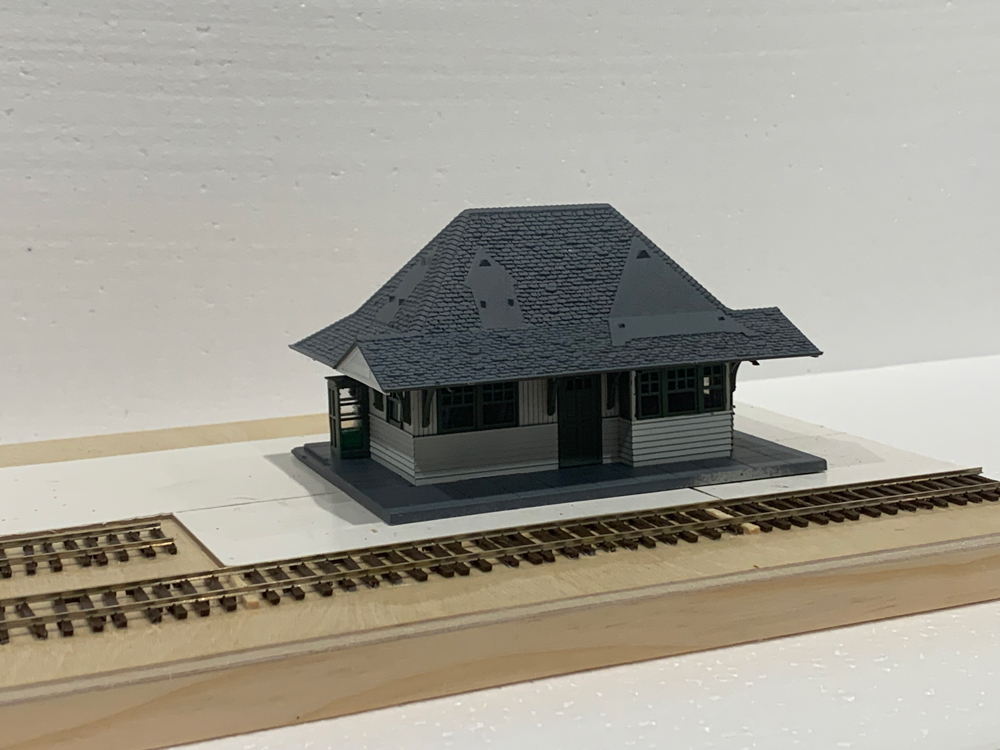
The purpose of the project is varied:
- To help me get the new modeling room organized
- Refamiliarize myself with all my tools and materials,
- Practice, mess up, fail and succeed while all the time relearning the various skills needed to achieve a successful model.
The diorama is meant to be a quick build but I intend to take as long as needed to make something I’m happy with. As such I decided to use a commercial (and cheap) depot kit from Atlas along with a couple of small pieces of commercial track. The diorama is another photo-box similar to the Trestle diorama that I built a while ago.
One of the most important changes in my modeling life has been the time of day that I model. I was definitely a ‘weekend warrior’, spending most of my time modeling on Saturday and Sunday morning. During the week I’m too tired after work (I’m a software engineer) to find the mental energy to think or act creatively. My wife, on the other hand, who is a writer (among other occupations) does her creative work in the morning. I looked to her example as a possible solution to my modeling woes and decided that I would set my alarm for 4:30am each morning.
I wake at 4:30am, I make my coffee at 5am, I read for an hour and then I go into the train room at 6am. I do my modeling between 6.00am and 7:30 am. The change has been remarkable. I’ve got more done in the last 8 weeks than the previous six months. The fact that I’m in there every morning means that I build a kind of momentum. It is exciting to watch my progress. It used to take me weeks to get some modeling tasks done which I now get done in a matter of days. I’m able to spend more time experimenting, testing, learning, and organize without feeling guilty that I am not doing enough actual modeling. Most important of all I’m actually having fun and going to bed each night feels like the night before Christmas.
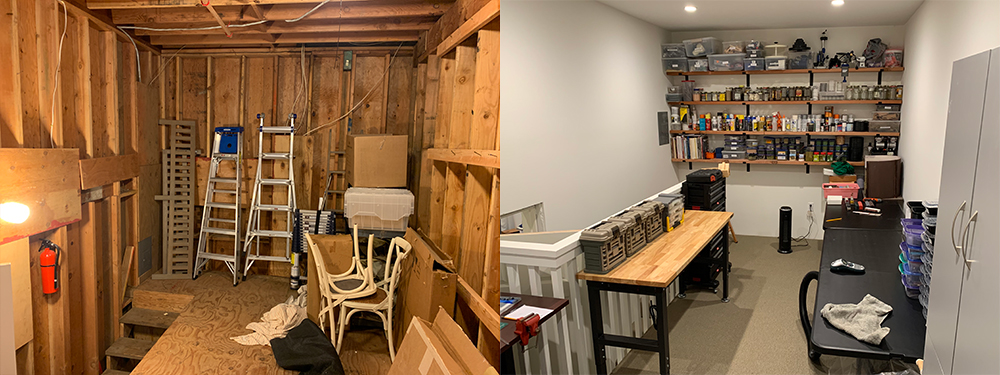
Any how enough yakking, here is where I am at:
The depot will be set in the midwest, probably Indiana as I’ve just read George Hilton’s book on the Monon and want to display Monon rolling stock, but in fact it could be anywhere with a small town feel plus trees and fields.
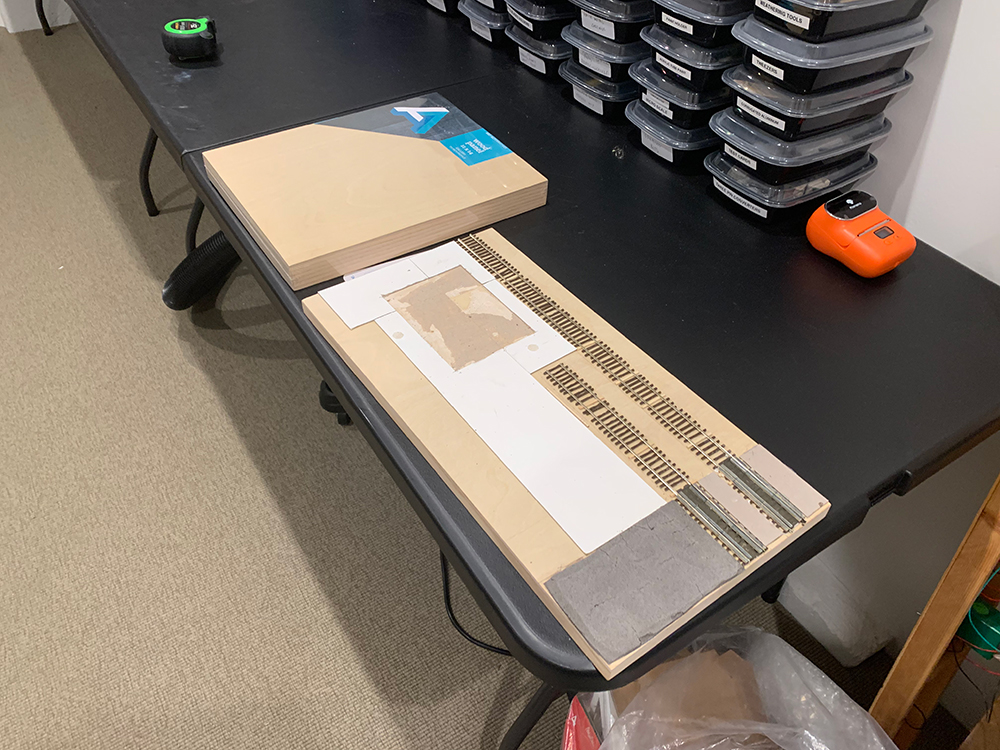
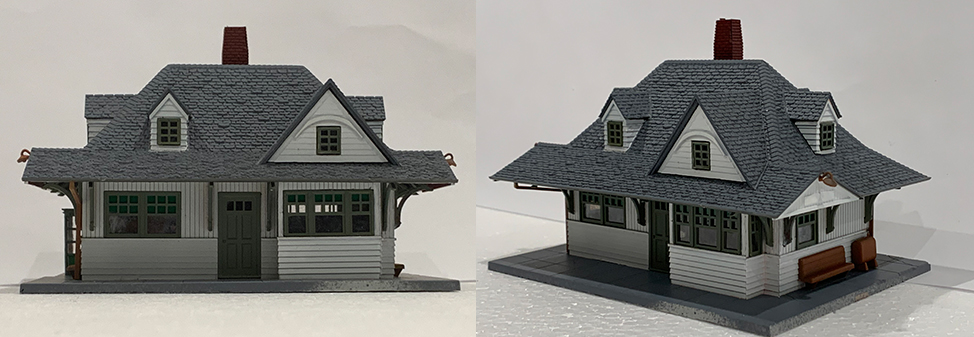
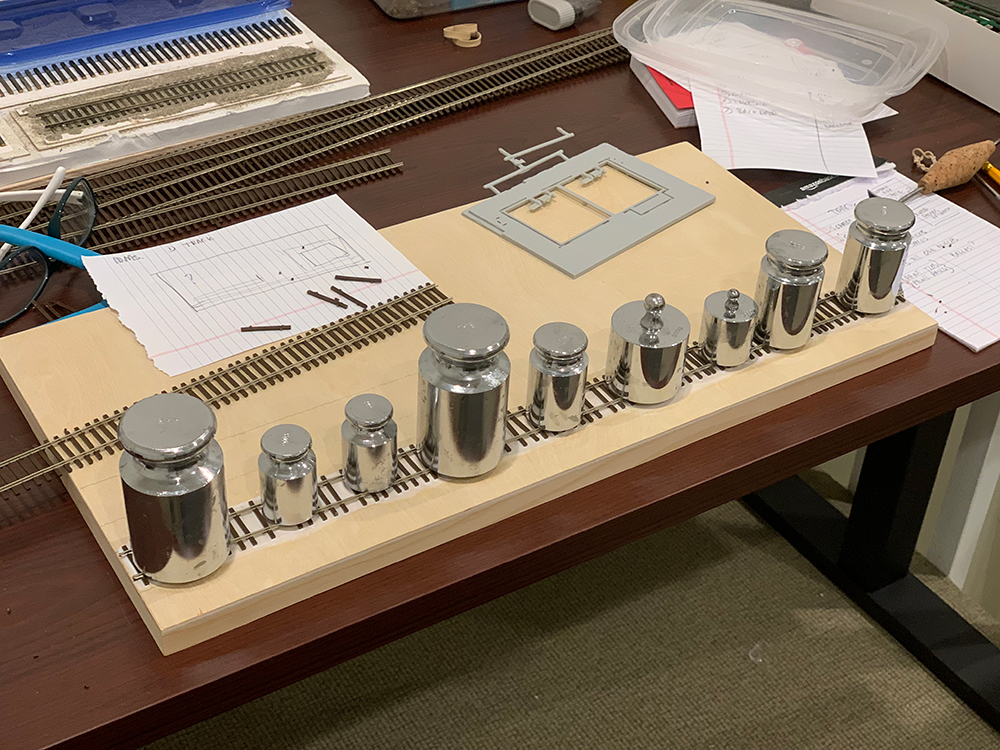
I don’t really have a plan yet for the laying out of the elements. I know I want a road and crossing. I want to try things I haven’t done before such as an asphalted parking area. I also want to spend much more time on the backdrop. With a small diorama such as this the backdrop plays a huge role in the overall scene being depicted and I don’t want to do a quick slapdash backdrop as I did on the trestle (where it was pure luck that it worked). I want to get it perfect this time.
I’m currently working on learning how to:
- weather wood
- use my airbrush
- create asphalt
- weather commercial track
I’ll post on the asphalt tests next week as I’m still in the middle of figuring out the process.
Here’s a quick preview:


